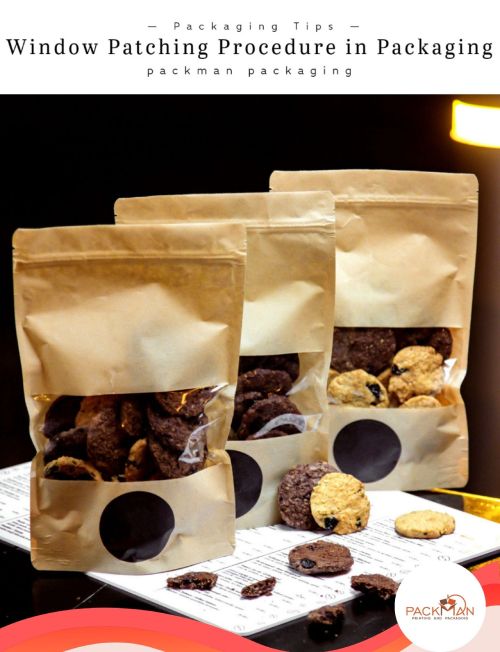Explains Packman Packaging, India’s Leading Packaging Company in India
In the world of printing and packaging, window patching is a critical process that combines practicality and aesthetics to create eye-catching and functional packaging solutions. This technique involves cutting a window in the packaging material and affixing a transparent plastic film to it, allowing consumers to see the product inside without opening the package.
Let’s delve deep into the process of window patching with the help of Packman Packaging, India’s top corrugated box manufacturer and wholesaler.
The Significance of the Window Patching Process
Window patching serves two main purposes.
Firstly, it entices consumers by offering a glimpse of the product inside, arousing curiosity and increasing appeal. For example, a cereal box with a window displaying colorful flakes can attract potential buyers. Secondly, it boosts marketing potential by strategically showcasing unique features and influencing purchasing decisions. High-end cosmetic brands, for instance, can use window patching to reveal the vibrant shades of luxurious lipsticks, enhancing the product’s allure to customers.
The window patching process involves precision and expertise to achieve the desired results. It typically follows these steps:
Step 1: Material Selection – Manufacturers choose suitable packaging material that will be durable enough to hold the product securely while showcasing it through the window. Window patching materials vary based on product, packaging needs, and cost.
Polyethylene Terephthalate (PET) offers high clarity besides being recyclable, lightweight yet sturdy enough to withstand the external pressure. However, it is prone to scratches. It is ideal for packaging electronics, retail, and other consumer products.
Polyvinyl Chloride (PVC) is more durable and has a damage-resistant surface but is not eco-friendly. It’s durable but degrades in UV light.
Polypropylene (PP) is relatively cost-effective compared to other materials and is often used for packaging items like candy, snacks, baked goods, etc.
Cellulose acetate is used for window patching in high-end packaging, such as luxury cosmetic products and premium confectioneries.
Polyolefin serves as a shrink film applied to pizza and boxed candies for packaging and preservation.
Step 2: Die Cutting – A specialized die-cutting machine is used to create precise openings in the packaging material. This can be a simple rectangle or a complex custom shape, depending on the product and branding requirements.
Step 3: Film Application — A window patching machine applies your chosen plastic film (PET, PVC, etc.) from a reel using electromagnetic energy, instantly sticking it to the packaging without drying time, ensuring fast and convenient finishing.
How to Find the Right Fit?
Window Size:
The dimensions of the window should showcase the product attractively while maintaining its structural integrity. Example: A small window for displaying chocolates in a box.
Product Stability/Sturdiness:
The patching should not compromise the product’s stability during handling or storage. Example: A reinforced window for delicate glassware packaging.
Shipping:
Consider the packaging’s ability to withstand transportation without damage to the window or product. Example: A window patch with impact-resistant materials for fragile items like electronics.
Environmental Factors:
Choose materials that protect the product from dust, moisture, and UV rays. Example: A weather-resistant window for outdoor products like garden seeds.
Marketing and Visibility:
The window should enhance product visibility and entice potential buyers. Example: A creatively shaped window on a cereal box revealing the product inside.
Cost-Effectiveness:
Balancing quality and cost is crucial for mass production. Example: A cost-efficient window design for budget-friendly snacks.
Pros of window patching:
- Enhanced product visibility
- Consumer appeal and shelf presence
- Builds consumer trust
- Allows product inspection without opening
- Differentiates the product from competitors.
Cons of window patching:
- Compromises the barrier properties of packaging.
- Potential for increased costs.
- Limited design flexibility.
- Susceptible to damage during transportation.
- Environmental concerns due to plastic film usage.
Conclusion
Window patching is a versatile technique that adds value to packaging in the printing and packaging industry.





